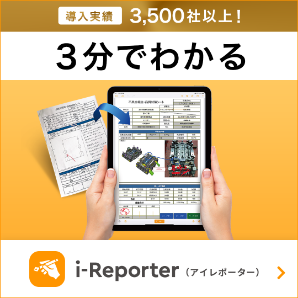What is 4M analysis? Explaining change management and analysis methods and benefits in the manufacturing industry
table of contents
What is 4M analysis? "Man", "Machine", "Material", "Method" This is a framework for analyzing causes by focusing on the following four elements.
It is mainly used for quality control and problem solving at manufacturing and production sites, and using 4M analysis can lead to improved quality of products and services.
In this article, we will explain in an easy-to-understand manner for those in manufacturing and other fields what 4M analysis is, as well as the process of resolving problems, its benefits, and points to note.
What is 4M analysis in manufacturing?
In manufacturing industries, it is essential to produce high-quality products that meet customer demands.
However, there is a risk of various problems occurring on-site, such as human error and accidents, and 4M analysis is effective in achieving appropriate quality control. We will explain 4M analysis in manufacturing and other workplaces.
What is 4M analysis?
4M analysis is a method for problem solving and process improvement that is primarily used in manufacturing and quality control.
We conduct cause analysis by focusing on the four "Ms": Man, Machine, Material, and Method. Breaking down a vague problem into specific elements makes it easier to identify the cause, which helps us find solutions.
This method is primarily used for quality control at manufacturing and production sites, but it can also be used for a wide range of purposes, such as reducing inventory and managing it appropriately.
The four elements that make up the 4M
When conducting a 4M analysis, it is important to properly manage and balance the four elements. Let's take a look at each element.
Man
The first element, "Man," refers to the workers and engineers involved in the manufacturing and production processes. It also includes the skills and experience of on-site workers and employees, their education and training status, their understanding of work methods and procedures, and their physical and psychological states.
Manufacturing processes such as material selection and machine operation require high levels of technology and skill, as they must be carried out accurately and quickly. Therefore, it is important to analyze the proficiency and aptitude of each worker, provide appropriate education and training as needed, and assign the most suitable personnel for the work.
The other elements of the 4Ms, namely, machines, materials, and methods, are all heavily influenced by workers and engineers, so it can be said that "people" is the most important element of the 4Ms.
Machine
"Machine" refers to the facilities and equipment used to produce a company's products. In manufacturing sites, the introduction of appropriate machinery is essential to maintain not only productivity but also work and product quality.
Old machinery and insufficiently inspected production equipment can lead to the shutdown of manufacturing lines and the production of defective products. In order to thoroughly manage quality, it is necessary to maintain equipment by introducing appropriate equipment and carrying out regular maintenance.
Material
"Material" refers to the raw materials and parts used to manufacture products. Manufacturing sites handle a wide variety of raw materials and parts obtained from various suppliers, so they must be managed correctly.
By establishing traceability, which records in detail the process from raw material procurement to manufacturing and the final product, it becomes possible to respond quickly if a problem does occur, which leads to increased credibility for the company.
In addition, to prevent cost increases due to excess or shortages, not only proper inventory management is necessary, but also demand forecasting and supply management.
Method
"Method" refers to the procedures and methods used in the manufacturing process. If work procedures are not standardized as rules, there is a risk of quality variations, so it is necessary to prepare clear manuals and procedures and thoroughly disseminate them.
Change management flow using 4M
4M change management (4M change point management) is an important initiative to maintain product quality by managing changes (change points) in the following four elements in each process in the manufacturing industry.
- Man
- Machine
- Material
- Method
This is one of the important methods in quality control, and is an essential process for preventing defective products and maintaining stable quality.
In manufacturing, changes can occur to people, machines, materials, or methods.
For example, specific changes include assigning new workers, introducing production equipment or changing machine settings, changing raw material suppliers, and reviewing work procedures.
The purpose of change management is to assess the risks in advance and take appropriate measures to ensure that these changes do not adversely affect product quality.
Steps to problem solving using 4M analysis
Once you have a grasp of each of the 4M elements, you should also understand how to use 4M analysis. We will explain how to use 4M analysis to solve problems in five steps.
Step 1. Identify the problem
The first step is to clarify the problem: identify the specific problem to be analyzed and identify the issues to be solved.
For example, identify the problems you are facing on-site, such as "the product defect rate is high in production process 2" or "the production efficiency of the manufacturing line is declining."
Step 2. Identify the problems and categorize them into the four "M" categories
The factors that cause the problem are identified using the 4Ms. For example, the problem of "high defect rate of products in production process 2" can be categorized as follows:
| element | Examples of problems |
| Man | Operational errors, lack of skills, and declining motivation of personnel |
| Machine | Machine malfunctions and breakdowns, incorrect settings, improper equipment layout, etc. |
| Material | Inventory management errors, losses due to material deterioration, use of incorrect materials, etc. |
| Method | Dependence on individual work, wasteful and inefficient work processes, etc. |
The results of classifying into four elements reveal that for each problem, there are multiple issues, ranging from human factors to operational and equipment issues.
Step 3. Collect and analyze data to identify the cause
For each factor, collect data from the site by checking the process records and equipment status of the workers on-site. Use the collected data to identify the root cause of the problem.
For example, if there are many operational errors by workers, we will conduct a detailed analysis to determine whether the cause is a lack of understanding of the work, insufficient training, or the work environment.
Step 4. Consider specific improvement measures
Consider what measures should be implemented for the identified causes. For example, if the cause of a worker's operational error is "lack of training" or "lack of skill," consider specific solutions and improvement methods, such as introducing systems and tools that make it easier for new employees to work, or changing the work flow so that it is understandable to everyone.
Step 5. Run the PDCA cycle
After implementing improvement measures, we monitor their effectiveness. By implementing the PDCA cycle and taking additional measures as needed, we can continuously review and improve the workplace, preventing recurrence of problems and improving quality.
Benefits of conducting 4M analysis
There are many benefits to 4M analysis. Here are three main benefits you can gain by using 4M analysis to tackle quality control and problem solving.
Ability to investigate the cause of a problem from multiple angles
4M analysis, which separates the analysis into four elements, allows for comprehensive investigation of the cause of a problem from multiple perspectives. By being able to pursue the cause of a problem from multiple angles, it becomes easier to identify the root cause of the problem.
Simple and easy to understand
The 4M analysis has a simple framework, making it easy to understand even for those without specialized knowledge. Managers and members of each department can easily provide opinions from their own perspectives, making it easy for teams to work on.
Helps prevent problems from recurring
By implementing 4M analysis, you can identify the root cause, and by taking appropriate measures, you can prevent the same problem from recurring. Another benefit is that it can easily lead to continuous improvement activities.
Key points to consider when conducting 4M analysis
There are several points you need to keep in mind to effectively conduct a 4M analysis. We will explain the two main points below.
See the big picture
First, keep an eye on the big picture. If you focus too much on individual elements, you risk losing sight of the bigger picture.
Let's assign appropriate priorities to the problems and changes that have been identified and solve each problem one by one.
Combine with other methods and frameworks
The second key point is to combine it with other methods and frameworks. By using a framework that incorporates other analytical methods and elements, 4M analysis can be used to solve problems and control quality more effectively and efficiently.
There are analysis methods such as "3H" and "5E" and frameworks such as "5M", "5M+1E", and "6M", so use them according to the problem and purpose.
Techniques to combine with 4M
3H: 3H is an acronym for "Hajimete (first time), Henko (change), and Hisashiburi (long time no see)." It refers to the timing when problems are likely to occur and require special attention.
By conducting 4M analysis at three different times, quality control and safety management can be strengthened.
5E: 5E is an acronym for "Education, Engineering, Enforcement, Example, and Environment." It takes into account five elements to solve problems and implement improvement measures.
A framework that adds elements to the 4M
5M: 5M, which adds "Measurement" to 4M, is a framework for improving quality by setting standards for measurement and inspection.
5M+1E: 5M+1E is a framework that adds "Environment" to 5M. Work environment factors such as temperature and humidity also have a significant impact on quality, so management is essential.
6M: 6M is a framework that adds "Management" to 5M. It aims to strengthen the overall management system and improve quality and productivity.
Make 4M analysis easier with the on-site reporting system "i-Reporter"!
Understanding the four elements of "people," "machines," "materials," and "methods" that form the foundation of manufacturing, logistics, and other workplaces, and using them to analyze problems when they occur, can be useful for quality control and safety management. Utilizing 4M analysis can increase a company's competitiveness and achieve sustainable growth.
The on-site report system "i-Reporter" is a tool that digitizes and visualizes on-site data and allows for real-time analysis. By instantly analyzing and sharing centralized data, problems can be detected early, allowing for faster and more accurate 4M analysis.
"i-Reporter" has been introduced in a wide range of industries, including manufacturing factories and logistics warehouses, and is a tool that is expected to improve the efficiency of quality control and productivity. It can also be used in a variety of ways, such as visualizing data to identify the causes of quality defects and identify bottlenecks in the production process, and automating the creation of various forms to improve work efficiency and operational efficiency.
i-Reporter can be used in a variety of situations in manufacturing and other workplaces, so please make use of it to improve the quality of your company's products and services.


This is the editorial department of the Field Document Research Institute!
This blog is operated by CIMTOPS Corporation., which develops and sells the field document electronic solution "i-Reporter."
We will be delivering industry information on a regular basis to help those of you working hard to promote digital transformation in the workplace, so please take a look!





